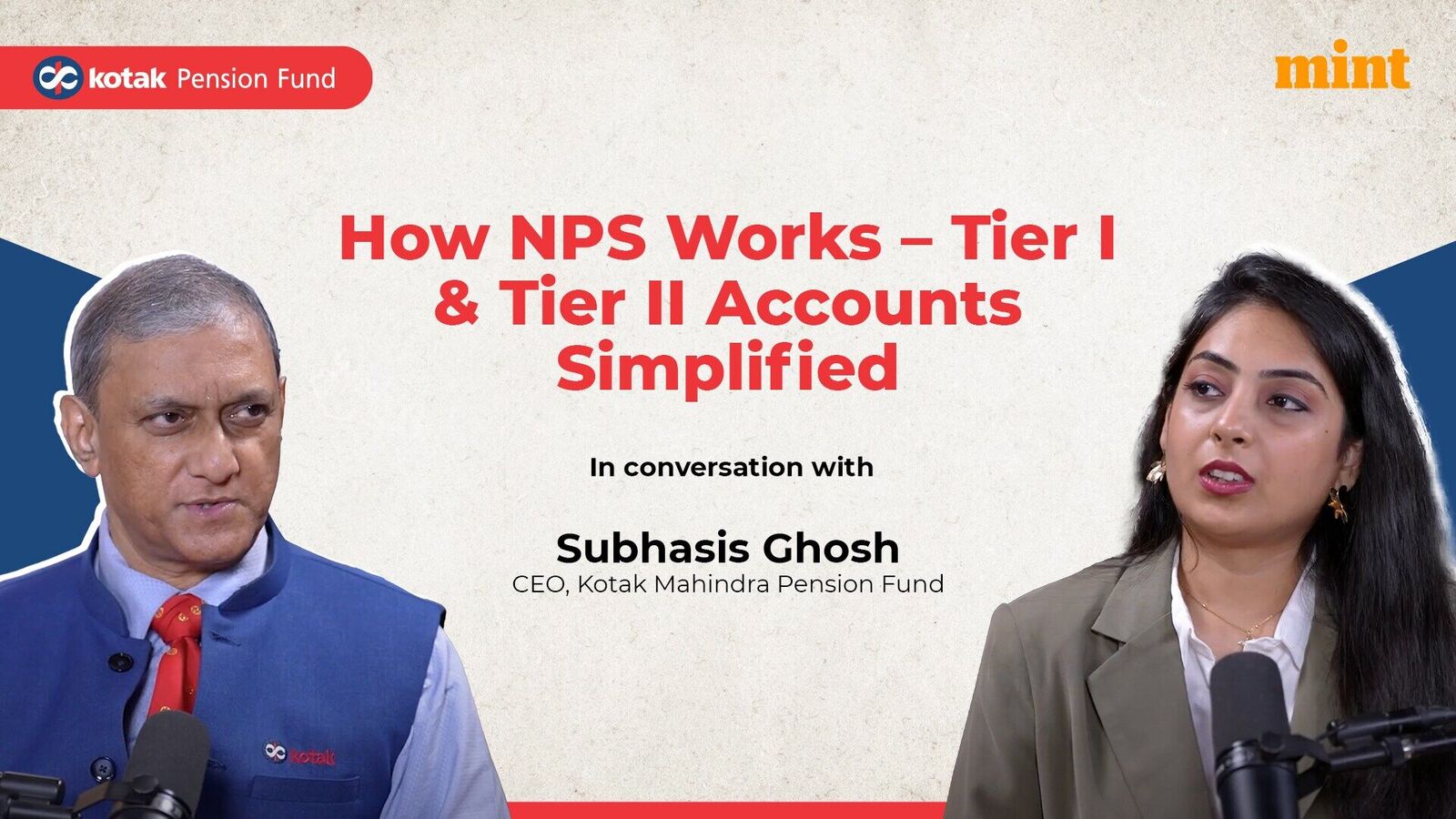In Episode 4 of “NPS Made Simple”, Subhasis Ghosh, CEO of Kotak Mahindra Pension Fund, dives into a topic that often confuses first-time investors—the difference between Tier 1 and Tier 2 accounts within the National Pension System (NPS). Can one system handle both long-term retirement goals and short-term liquidity needs?
It turns out it can. In a candid conversation, Ghosh explains how NPS offers a dual-layered solution for Indian investors.
Q: Arjun, 38, is trying to plan for both retirement and emergencies. What’s the basic difference between Tier 1 and Tier 2 accounts?
Think of Tier 1 as your core retirement account, just like a provident fund. It’s designed for long-term savings, with limited withdrawals allowed only under specific conditions. Tier 2, on the other hand, is completely flexible. You can invest today and withdraw tomorrow—it’s more like a savings bank or a mutual fund-style account. Together, they offer both structure and liquidity.
Q: So can Tier 2 replace mutual funds for short-term investments?
To an extent, yes. Tier 2 offers similar liquidity with low fund management charges same as Tier 1. Fund managers apply the same discipline to both tiers, so performance is often comparable. However, Tier 2 doesn’t offer any tax benefits.
Q: Who typically uses Tier 2, and how?
Some investors open a Tier 1 account with a minimum of ₹1,000 just to get started and then park most of their money in Tier 2 for flexibility. Later, when they’re ready to commit to retirement savings, they shift funds from Tier 2 to Tier 1 and claim tax benefits on withdrawal. It’s a smart move for balancing liquidity with long-term benefits.
Q: What about withdrawal rules?
Tier 1 is strict—you can only make three partial withdrawals (up to 25% of your contributions) before age 60 and only under specific circumstances, like medical emergencies, education etc. Tier 2, however, is open-ended—you can withdraw anytime, any amount, without restrictions.
Q: How is taxation handled across both accounts? Only Tier 1 comes with tax benefits: You can claim up to ₹1.5 lakh under Section 80CCD(1) (within the overall ₹1.5 lakh limit of Section 80C) and an additional ₹50,000 under Section 80CCD(1B), which is exclusive to NPS. Employer’s contributions are also eligible for tax benefits—up to 10% of basic + DA under the old tax regime, and up to 14% of basic + DA under the new tax regime, upto ₹ 7.50 Lakh annually, as per Section 80CCD(2). Tier 2 does not offer any tax deductions or exemptions.
Q: What about tax advantages in the new regime?
In the new tax regime, individual deductions are not available. However, employers’ contributions (under Section 80CCD(2)) are eligible, making NPS one of the only investment products with a tax-saving component under the new regime.
Q: So how should one decide how much to invest in each?
Start by maximizing the employer’s contribution benefit—that’s 10% (or 14%) of your basic salary. Beyond that, your Tier 1 contribution should depend on your retirement planning needs, and Tier 2 can be used for short-term flexibility. But remember: tax benefits and pension structure apply only to Tier 1.
Takeaway: NPS doesn’t just prepare you for retirement—it also gives you a disciplined system for managing emergency savings.
Watch Episode 4 to learn how Tier 1 and Tier 2 accounts can help you balance long-term goals with immediate financial flexibility.
Note to the Reader: This article is part of Mint’s promotional consumer connect initiative and is independently created by the brand. Mint assumes no editorial responsibility for the content.

